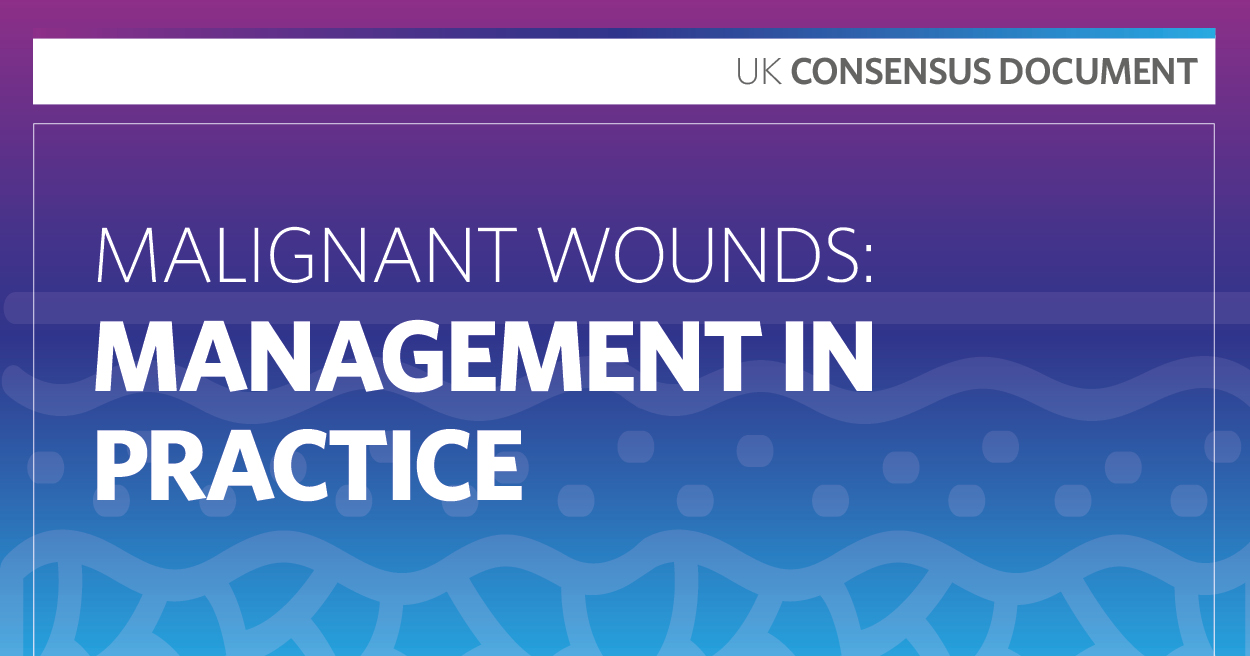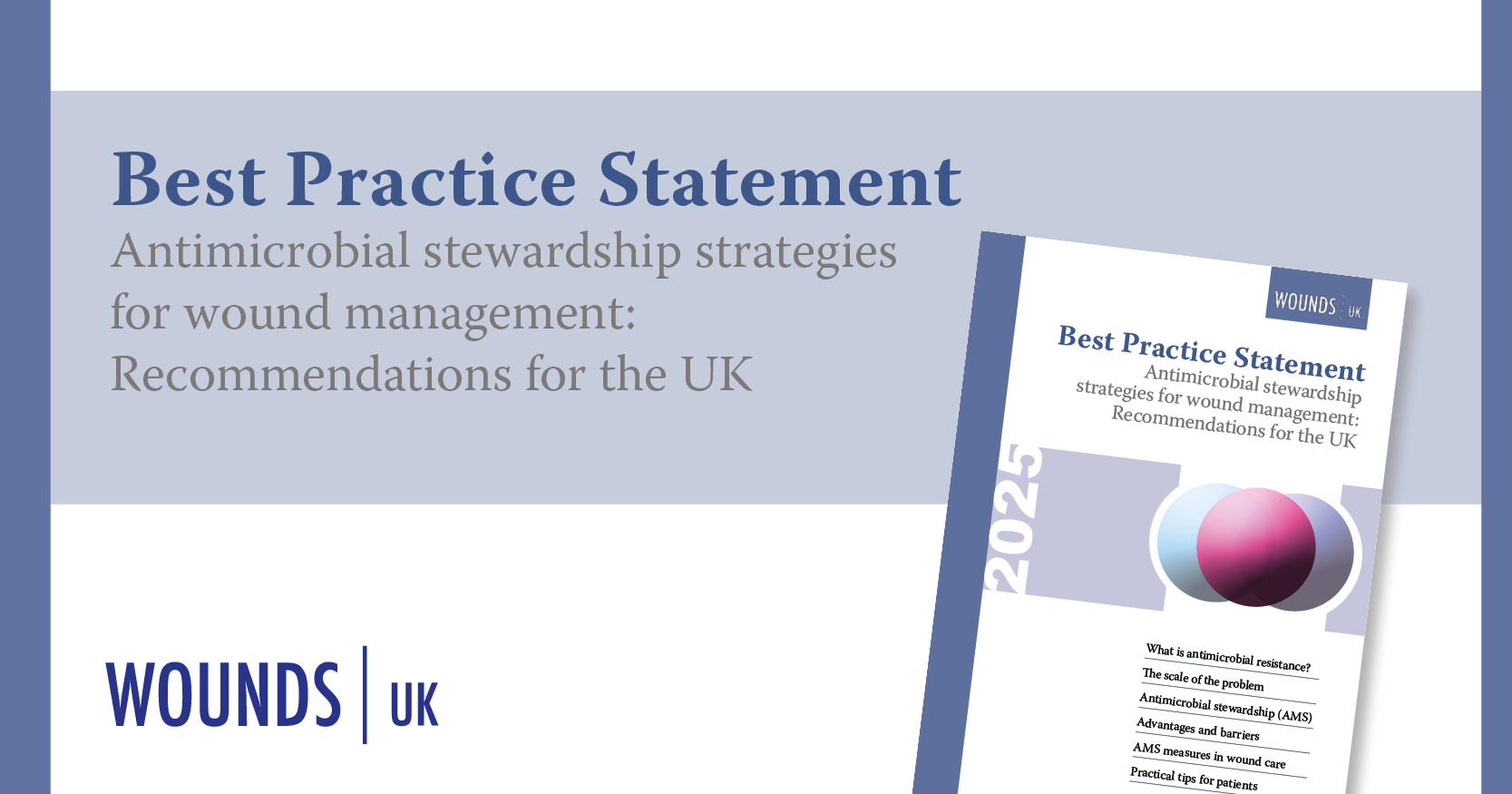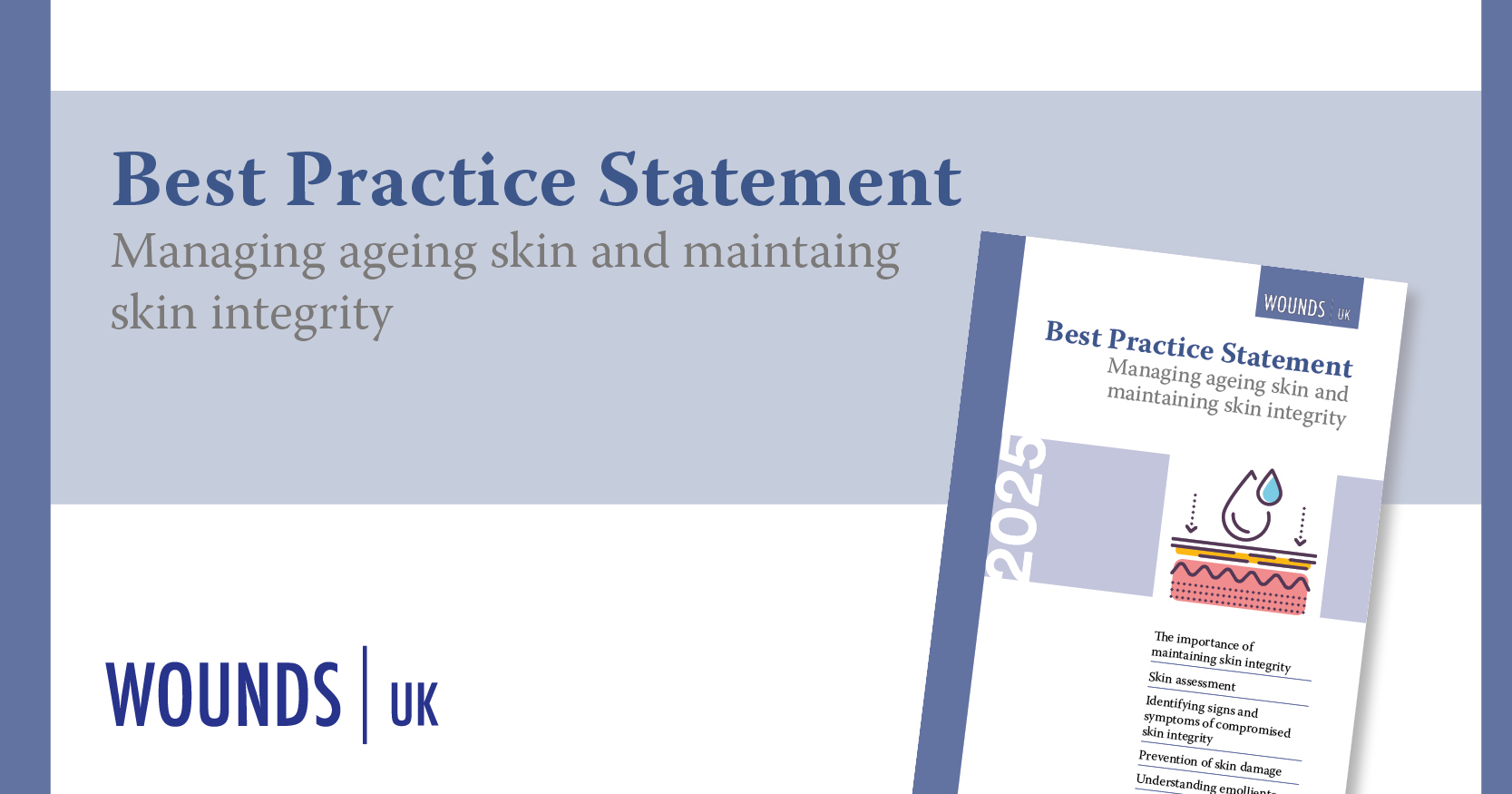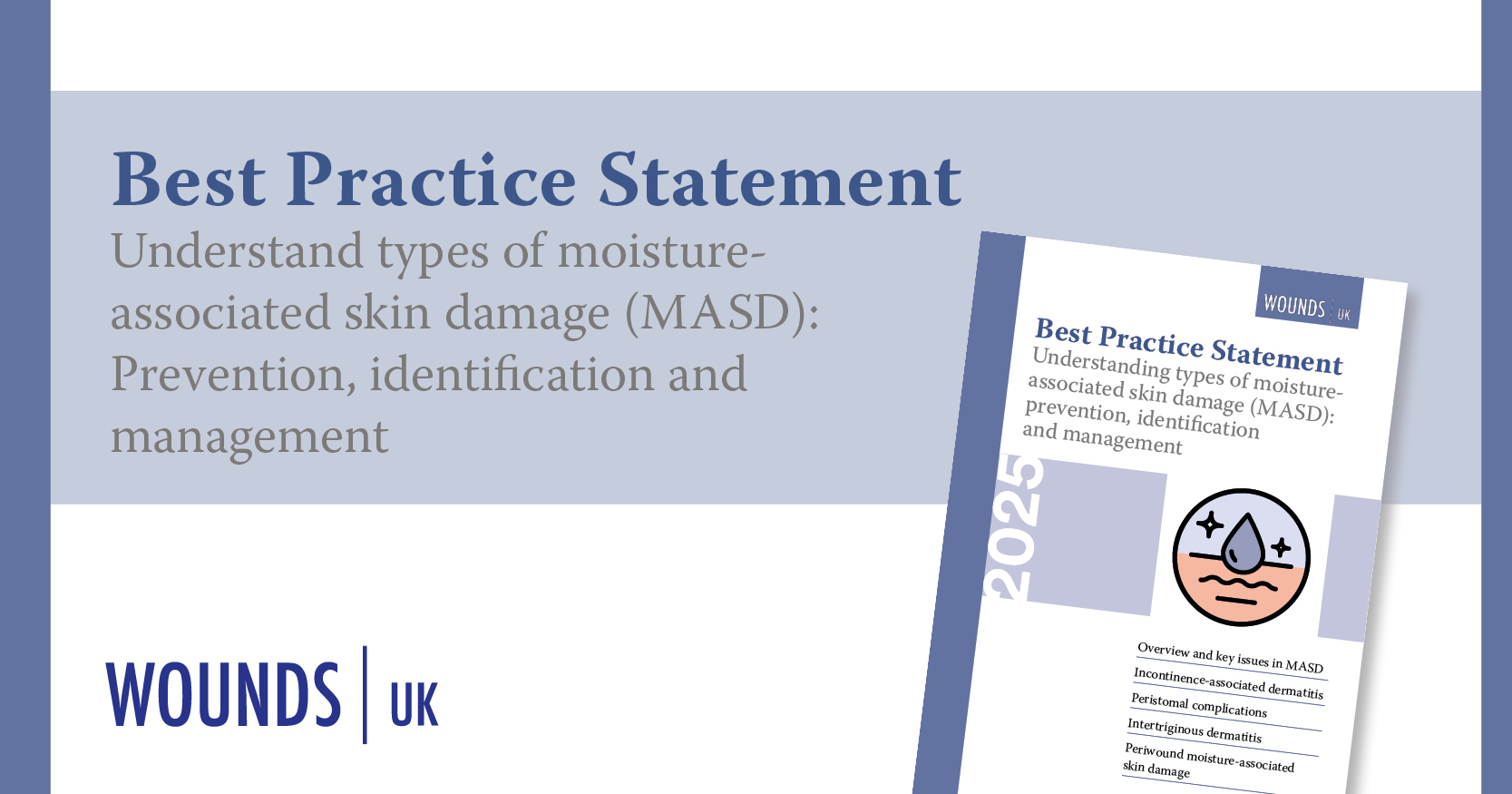ReferencesAlexander S (2009) Malignant fungating wounds: epidemiology, aetiology, presentation and assessment. J Wound Care 18(7):273-6
Black J, Berke C (2020) Ten top tips: Managing wound odour. Wounds International 11(4): 8-11
Brown A (2014) Strategies to reduce or eliminate wound pain. Nursing Times 110 (15): 12-5
Cancer Research UK (2024) Cancer incidence for all cancers combined. Available online at: www.cancerresearchuk.org/health-professional/cancer-statistics/incidence/all-cancers-combined (accessed 16.04.2024)
Cornish L (2019) Holistic management of malignant wounds in palliative patients. Br J Community Nurs 24(Sup9):S19-23
Deyell M, Garris CS, Laughney AM (2021) Cancer metastasis as a non-healing wound. British Journal of Cancer 124: 1491-502
Dhoonmoon L, Fletcher J, Atkin L et al (2021) Best practice statement. Addressing skin tone bias in wound care: assessing signs and symptoms in people with dark skin tones. Wounds UK
Dhoonmoon L, Nair HKR, Abbas Z et al (2023) Wound care and skin tone: Signs, symptoms and terminology for all skin tones. Wounds International
Faria C, Branco V, Ferreira P et al (2021) Total pain management and a malignant wound: The importance of early palliative care referral. Cureus 13(12): e20678
Firmino F, Ferreira SADC, Franck EM et al (2020) Malignant wounds in hospitalized oncology patients: Prevalence, characteristics, and associated factors. Plast Surg Nurs 40(3): 138-44
Fromantin I, Seyer D, Watson S et al (2013) Bacterial floras and biofilms of malignant wounds associated with breast bacterial floras and biofilms of malignant wounds associated with breast cancers. J Clin Microbiol 51(10): 3368-73
Furka A, Simkó C, Kostyál L et al (2022) Treatment algorithm for cancerous wounds: a systematic review. Cancers (Basel) 14(5): 1203
Gardner S, Taylor K (2020) POSIES clinical pathway for malignant/fungating wounds. Available online at: https://medicinesmanagement.doncasterccg.nhs.uk/wp-content/uploads/2023/07/Posies-Clinical-Pathways-for-Malignant.Fungating-Wounds-v2-2024.pdf (accessed 19.06.2024)
Hayashida K, Yamakawa S (2021) Topical odour management in burn patients. Burns Trauma 9: tkab025
International Wound Infection Institute (2022) Wound infection in clinical practice: principles of best practice. Wounds International
Kirkcaldy AJ, Wilson M, Cooper R et al (2023) Strategies for reducing pain at dressing change in chronic wounds: protocol for a mapping review. BMJ Open 13(10): e072566
Lo S-F, Hu W-Y, Hayter M et al (2008) Experiences of living with a malignant fungating wound: a qualitative study. J Clin Nurs 17(20): 2699-708
Lugano R, Ramachandran M, Dimberg A (2020) Tumor angiogenesis: causes, consequences, challenges and opportunities. Cell Mol Life Sci 77(9): 1745-70
Luo B, Xiao Y, Jiang M et al (2022) Successful management of exudate and odor using a pouch system in a patient with malignant facial wound: A case report. Asia Pac J Oncol Nurs 9(4): 236–241
Macmillan Cancer Support (2020) Ulcerating cancer wounds. Available online at: www.macmillan.org.uk/cancer-information-and-support/impacts-of-cancer/ulcerating-cancer-wounds (accessed 16.04.2024)
Macmillan Cancer Support (2024) Cancer statistics in the UK. Available online at: https://www.macmillan.org.uk/about-us/what-we-do/research/cancer-statistics-fact-sheet#references (accessed 14.06.2024)
Marie Curie (2021) Massive haemorrhage in palliative care. Available online at: https://www.mariecurie.org.uk/professionals/palliative-care-knowledge-zone/recognising-emergencies/massive-haemorrhage (accessed 17.04.2024)
National Institute for Health and Care Excellence (2024) Prescribing in palliative care
Nicodeme M, Dureau S, Chéron M et al (2021) Frequency and management of hemorrhagic malignant wounds: a retrospective, single-center observational study. J Pain Symptom Manage 62(1): 134-40
Nishida N, Yano H, Nishida T et al (2006) Angiogenesis in cancer. Vasc Health Risk Manag 2(3): 213-9
Olsson M, Jarbrink K, Divakar U et al (2019) The humanistic and economic burden of chronic wounds: a systematic review. Wound Repair Regen 27(1): 114-25
O’Neill L, Nelson Z, Ahmad N et al (2022) Malignant fungating wounds of the head and neck: Management and antibiotic stewardship. OTO Open 6(1): 2473974X211073306
Palliative Care Formulary (2022) PCF8. Pharmaceutical Press
Pramod S, Rice S (2023) Management of malignant fungating wounds with a bioactive microfibre gelling technology dressing: an evaluation. Wounds UK 19(4): 68-77
Probst S, Arber A, Faithfull S (2013) Malignant fungating wounds: the meaning of living in an unbounded body. Eur J Oncology Nurs 17(1): 38-45
Schultz GS, Sibbald RG, Falanga V et al (2003) Wound bed preparation: a systematic approach to wound management. Wound Repair Regen 11: 1-28
Schultz V, Triska OH, Tonkin K (2002) Malignant wounds: Caregiver-determined clinical problems. J Pain Symptom Manage 24(6):572-7
Society and College of Radiographers (2020) Radiation dermatitis guidelines for radiotherapy healthcare professionals. Available online: https://www.sor.org/getmedia/6cc80174-4478-4cd2-b501-35b41aae820d/2020_version_4_final_practice_guideline_radiotherapy_skin_care_llv1.pdf_2 (accessed 14.06.2024)
Starace M, Carpanese MA, Pampaloni F et al (2022) Management of malignant cutaneous wounds in oncologic patients. Support Care Cancer 30(9): 7615-23
Tilley CP, Fu MR, Qiu JM et al (2021) The microbiome and metabolome of malignant fungating wounds: a systematic review of the literature from 1995 to 2020. J Wound Ostomy Continence Nurs 48(2) :124-35
Tilley CP, Lipson J, Ramos M (2016) Palliative wound care for malignant fungating wounds holistic considerations at end-of-life. Nurs Clin North Am 51(3): 513-31
Vardhan M, Zia Flaminio Z, Sapru S et al (2019) The microbiome, malignant fungating wounds, and palliative care. Front Cell Infect Microbiol 9: 373
Wiese F, Kutschan S, Doerfler J et al (2021) Green tea and green tea extract in oncological treatment: a systematic review. Int J Vitam Nutr Res 17: 1-13
Woo KY (2010) Wound-related pain: anxiety, stress and wound healing. Wounds UK 6 (4): 92-8
World Union of Wound Healing Societies (2019) Wound exudate: Effective assessment and management.





